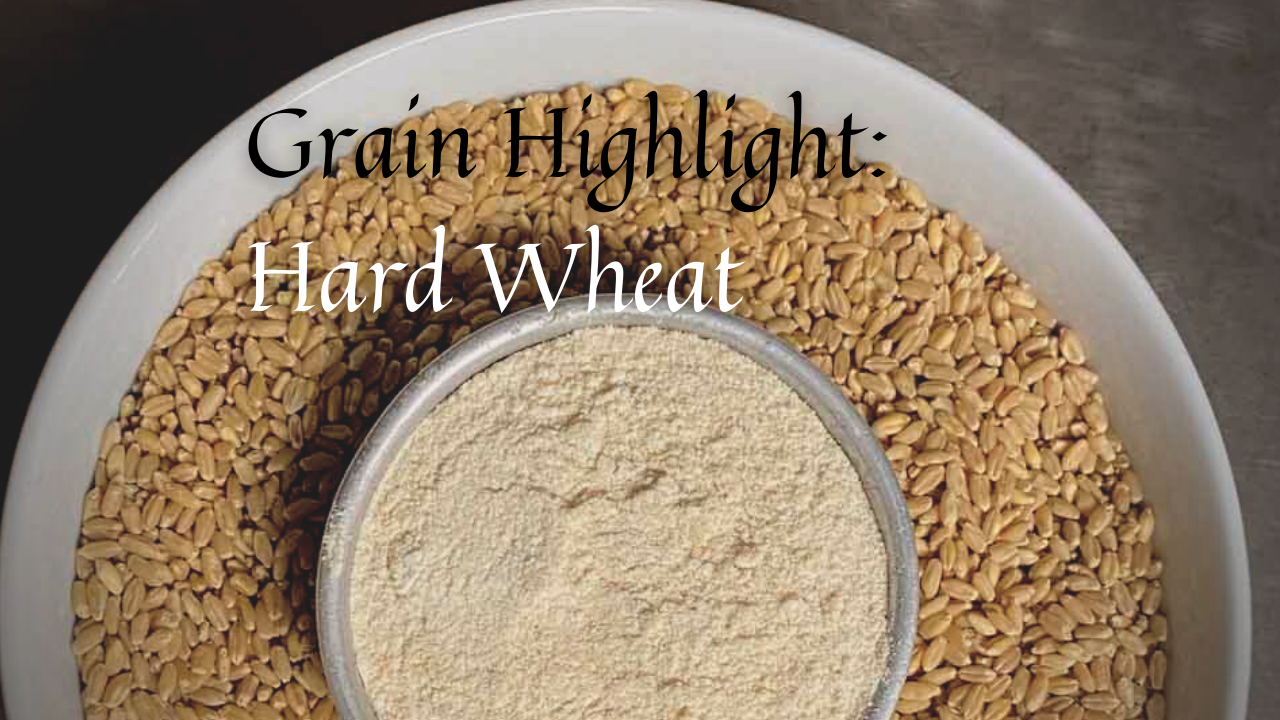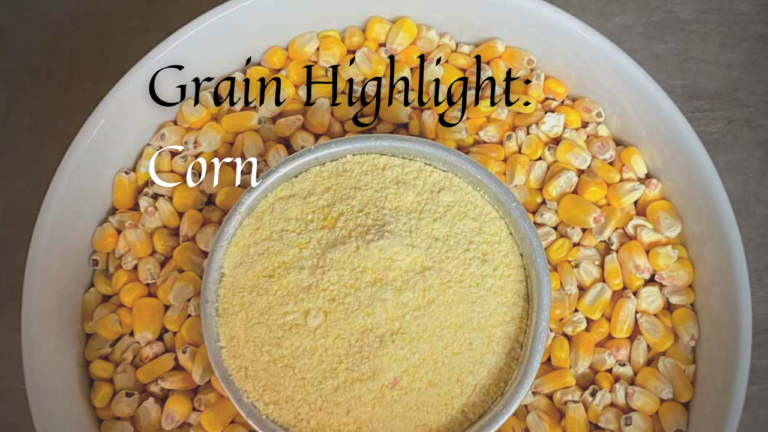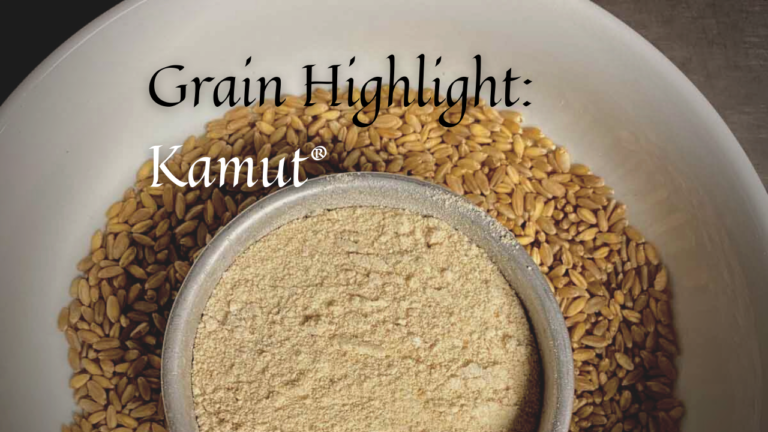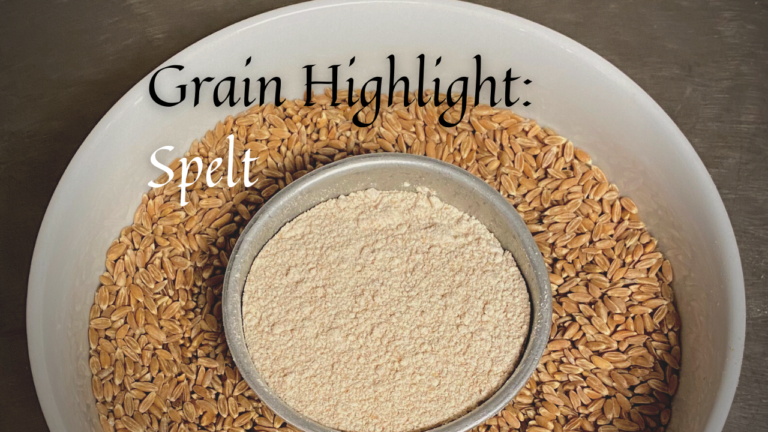This post may contain affiliate links. Read my full disclosure here.
As an Amazon Associate I earn from qualifying purchases.
If you are new to milling grains at home (or purchasing FRESHLY milled grains by someone local to you), I suggest you read my post: Homemade Flour from Whole Grains. It will answer many questions that may arise after reading this.
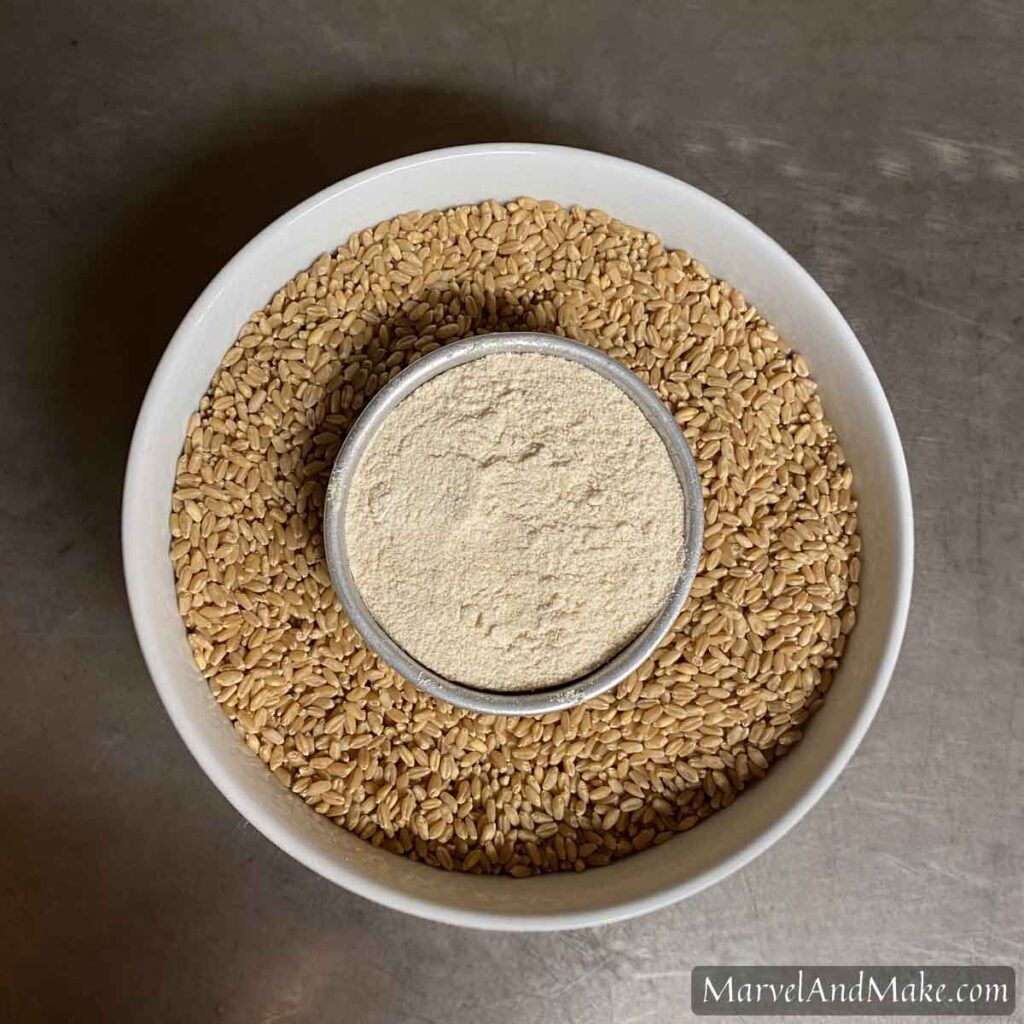
Hard Red and White Wheat
Like Soft Wheat, Hard Wheat also comes in two varieties – Red and White. Hard Red Wheat has a more bold, nutty flavor while Hard White Wheat is much more mild. It’s obvious which is which, the White variety produces a white/lighter flour and Red makes a darker flour with an amber hue.
Hard Wheat is grown in colder, drier climates. It has a high-protein content ranging from 10% to 15%. This high protein structure allows gluten to form when mixed with other ingredients. Gluten development is encouraged when liquid is added to flour and worked (kneaded) into the dough. For more on gluten, check out this article from King Arthur.
Hard Wheat is Best For…
The high gluten content of Hard Wheat makes it excellent for yeasted breads (including sourdough) that need to support a good rise and also breads that are more elastic (gluten stretches).
Use Hard Wheat for dinner rolls, hamburger buns, breadsticks, or anything you want to have a decent “rise.” Also use it for pizza crust, cinnamon rolls, and tortillas.

